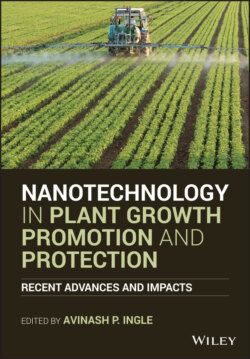Читать книгу Nanotechnology in Plant Growth Promotion and Protection - Группа авторов - Страница 30
1.3.6 Risks of Using Nano‐based Agrochemicals
ОглавлениеCurrent research has revealed that the absorption, translocation, and accumulation of nanoparticles depend on various factors including the control of the microbial pathogen, plant parts, plant species and size, chemical composition, functionality, and stability of nanoparticle used (Raliya et al. 2015). Because the guidelines or protocols for quantification of nanoparticles within tissues are not yet clearly defined, the bulk of the data is generated for germination and cell culture. The present research discussion is more focused on the effect of nanoparticles on plants. But, the effect of application of nanoparticles to the next generation of plants exposed to nanoparticles is still not known (Mohamed and Abd‐Elsalam 2018).
On the other hand, the antimicrobial activity of nanoparticles against different microbes and plant pathogens is undeniable fact, but the effects of these nanoparticles on soil microflora are less documented, which attracts much attention from scientists. There are many gaps in our knowledge with regards to the toxicity of these nanoparticles to the environment and different ecological systems. The negative effects of nanoparticles were recorded on denitrifying bacteria which disrupts the process of denitrification in soil (Bajpai et al. 2020).
There is also an urgent need to feel safe about the nanomaterials' phytotoxicity when applied to crop plants, in addition to understanding the potential benefits of using the nanotechnology in agriculture. Therefore, the first step should be related to analysis of penetration of those particles into plant cells and the way in which they are transported. For the biosafety of nanomaterials, formulation stability is also an important feature (Adisa et al. 2019).
